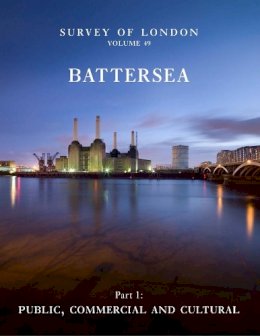
Survey of London: Battersea: Volume 49: Public, Commercial and Cultural
Andrew Saint
The south London parish of Battersea has roots as a working village, growing produce for London markets, and as a high-class suburb, with merchants’ villas on the elevated ground around Clapham and Wadsworth Commons. Battersea enjoyed spectacular growth during Queen Victoria’s reign, and railroads brought industry and a robust building boom, transforming the parish into another of London’s dense, smoky neighborhoods, though not without its unique and distinguishing features. Among these are Battersea Park, which was created by the Crown in the 1850s; the monumental Battersea Power Station, completed in 1939; and Clapham Junction railway station, which is, by measure of passenger interchanges, the busiest station in the United Kingdom.
The two latest volumes of the Survey of London, 49 and 50, trace Battersea’s development from medieval times to the present day. Offering detailed analysis of its streets and buildings both thematically and topographically, and including copious original in-depth research and investigation, the books are a trove of architectural history and British history. Profusely illustrated with new and archival images, architectural drawings and maps, these volumes are welcome additions to the acclaimed Survey of London series.
Published for English Heritage by Yale University Press on behalf of the Paul Mellon Centre for Studies in British Art
Product Details
About Andrew Saint
Reviews for Survey of London: Battersea: Volume 49: Public, Commercial and Cultural
Christopher Howse
The Daily Telegraph
“It is, perhaps, no coincidence that this magnificent achievement is not the work of an inchoate, overpaid bureaucracy (it would have expired years ago if it were), but of a clever, small, scholarly team of never more than six researcher-writers and a couple of draughtsmen, now under the inspired editorship of Andrew Saint. Long may they flourish!”—John Martin Robinson, Country Life
John Martin Robinson
Country Life
‘The survey is an institution unique in the urban world. Nothing like it has ever been attempted elsewhere and perhaps could never be. It is both testimony to and commemoration of London’s patchwork complexity where the distinctive character of small neighbourhoods has defined in large part the living history of the city. . .These are beautiful books, a fit setting for the scholarship that has gone into them.’—Jerry White, Times Literary Supplement
Jerry WHite
Times Literary Supplement
